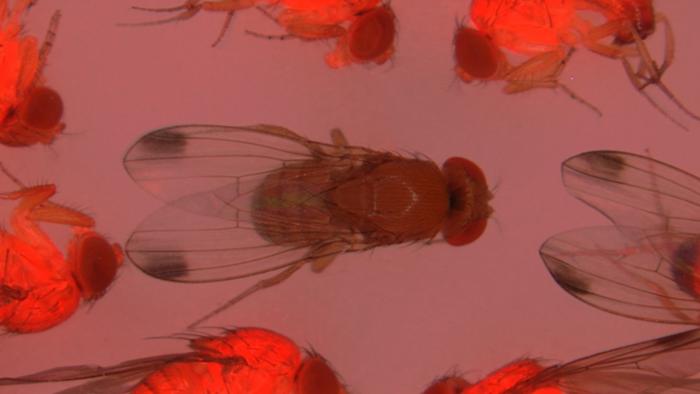Even if further testing validates it, there will be a tough time getting it through the current US regulatory system. CRISPR stands for “clustered regularly interspaced short palindromic repeats” and Cas9 is an enzyme that performs like molecular scissors to cut DNA. CRISPR systems are derived from bacterial immune systems that recognize and destroy viruses and other invaders, and are being developed as solutions to problems in human, plant and animal health, among other uses. Yet environmentalists and their political in the current administration call everything created after 1950 a "GMO" and raise money promising to block it.

Researchers used a florescent protein to mark the genetic changes to spotted-wing Drosophila.
Credit: Max Scott, NC State University
Even products that would greatly improve the environment, like targeting the doublesex gene resulting in female sterility in numerous experiments. Gene drives can preferentially select, change or delete particular traits or characteristics and “drive” those edits through future generations, resulting in a sometimes far greater than 50% chance of passing those changes to progeny, which means no need to continue to buy new technology - one of the ways activists are critical of GMOs. Yet if it can be inherited, there are protests about that also.
The hurdles for CRISPR products, just like with nuclear power and cell phones, is that people who are gullible enough to believe that organic food is healthier and that post-World War II weedkillers cause cancer have the lawyers.
The science looks solid. They used a fluorescent red protein to mark the presence of the CRISPR/Cas9 genetic change to the fly’s genome. The gene drive systems transmitted that fluorescent protein to 94-99% of progeny, the paper reports. Mathematical modeling predicted how efficiently the gene drive system would suppress a given D. suzukii population in laboratory cages. The modeling showed that releasing just one modified fly for every four “wild” flies – those not genetically modified – could tank fly populations within approximately eight to 10 generations.
Next steps include contained trial experiments in cages in an NC State greenhouse.





Comments